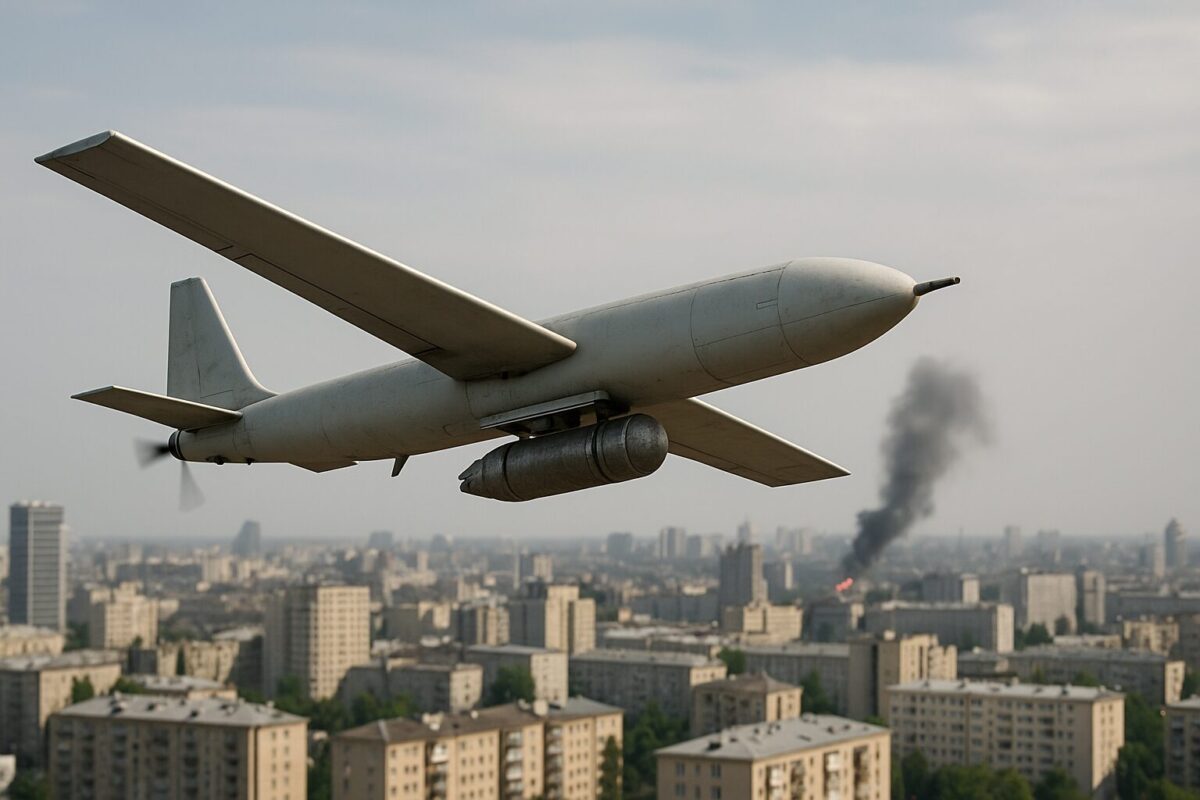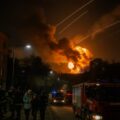
Shahed Drones with Shrapnel: How Russia’s New Tactic Increases Urban Threats
In the early hours of June 10, Kyiv came under one of the largest air attacks since the beginning of Russia’s full-scale war. More than 300 drones and missiles were launched toward the city. Ukraine’s air defense shot down the vast majority, but the threat wasn’t just in the number it was in the warheads.
The most dangerous element wasn’t the blast itself, but what was inside: a payload filled with shrapnel. This type of weapon poses a deadly risk even when the drone is intercepted.
What Happened During the Attack?
According to official reports, Russia launched Shahed drones, as well as ballistic and cruise missiles. Approximately 315 drones and at least seven missiles were aimed at Ukraine. Of those, 284 were intercepted.
Kyiv experienced explosions in seven different districts. Debris damaged residential buildings, cars, warehouses, and office spaces. Fires were reported in several areas. At least four civilians were injured in the capital. Other cities, including Odesa and Cherkasy, were also hit with more severe consequences.
What Is Shrapnel and Why Is It So Dangerous?
On the morning after the attack, the Ukrainian Air Force confirmed that some of the drones used in the strike carried shrapnel warheads.
Shrapnel consists of small metal fragments or ball bearings packed inside a warhead. When it explodes, the fragments scatter at extremely high speeds, hitting everything in their path. Unlike precision-guided explosives, shrapnel spreads randomly and over wide distances making it especially dangerous in densely populated urban areas.
These warheads are designed not to destroy a specific target but to cause indiscriminate harm damaging vehicles, buildings, and injuring or killing people nearby.
How to Protect Yourself
The most important advice: stay away from windows and do not go outside during an air raid alert.
Shrapnel can pierce glass, travel through open areas, and cause severe injuries to anyone in its path even if the drone is intercepted.
- The safest place is an interior hallway, a bathroom, or a designated shelter.
- If caught outside, lie on the ground and protect your head with your arms or a backpack. Seek cover behind concrete walls, barriers, or go underground if possible.
- Never approach debris some warheads may not have detonated fully.
What to Do If Someone Is Injured
Shrapnel wounds can be small on the surface but deep and dangerous underneath. Here’s what to do:
- Stop the bleeding apply pressure or use a tourniquet above the wound.
- Do not attempt to remove embedded fragments.
- Cover the wound with a clean cloth or sterile dressing.
- Call emergency services or bring the injured person to the nearest medical facility.
Even minor-looking wounds can lead to infection, internal bleeding, or organ damage. Always seek medical care.
Revelant
Why This Matters
Weapons loaded with shrapnel are not about military objectives. They’re a tool of civilian terror.
Shrapnel doesn’t discriminate. It spreads randomly and kills indiscriminately. These weapons are designed to sow chaos, fear, and confusion — especially in cities.
That’s why ignoring air raid alerts can be deadly. These are not just background sirens — they are warnings of real threats falling from the sky.
Not Fear — Awareness
Ukrainians have adapted to wartime life. But new types of weapons require updated safety habits.
Understanding how shrapnel works and what to do during an attack isn’t alarmist — it’s responsible. For yourself, your family, and your community.
And in a time when safety depends on knowledge as much as defense systems, awareness is a form of resistance. Staying informed is an act of protection.















